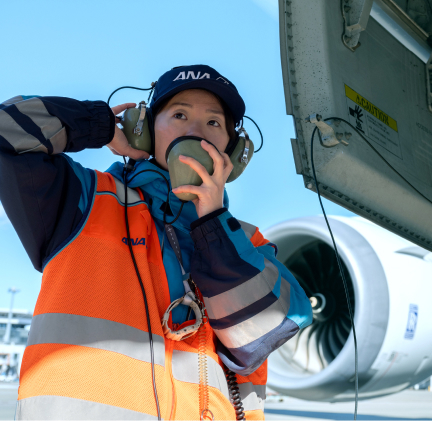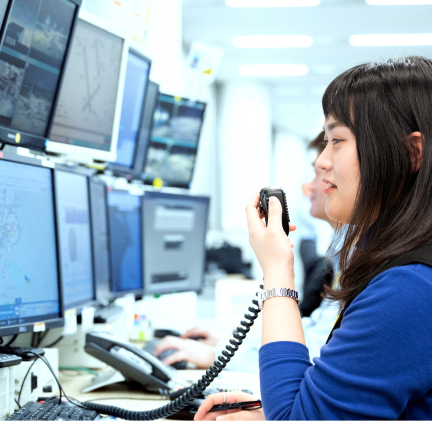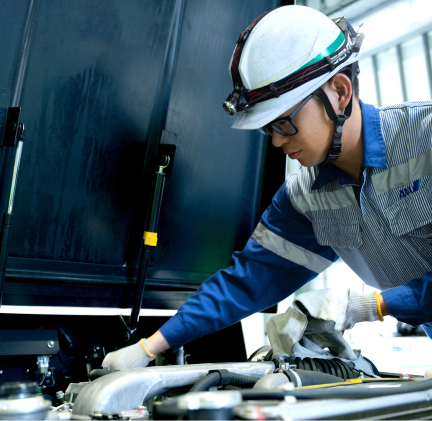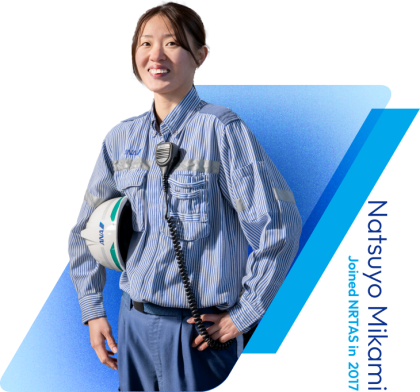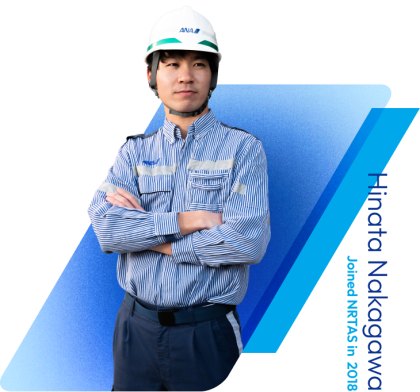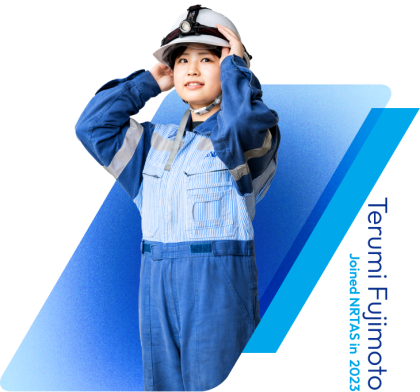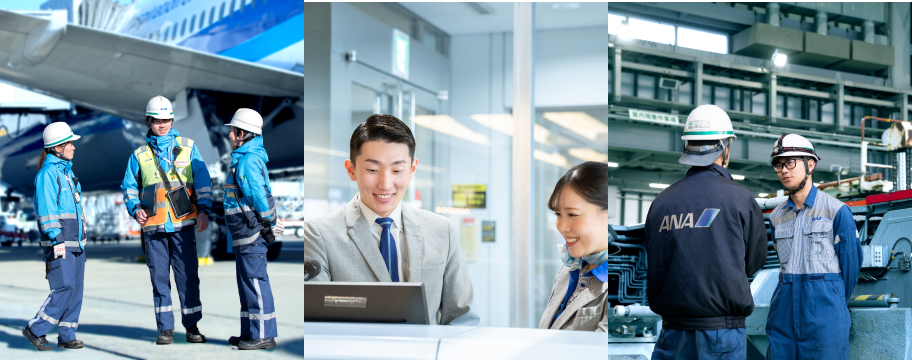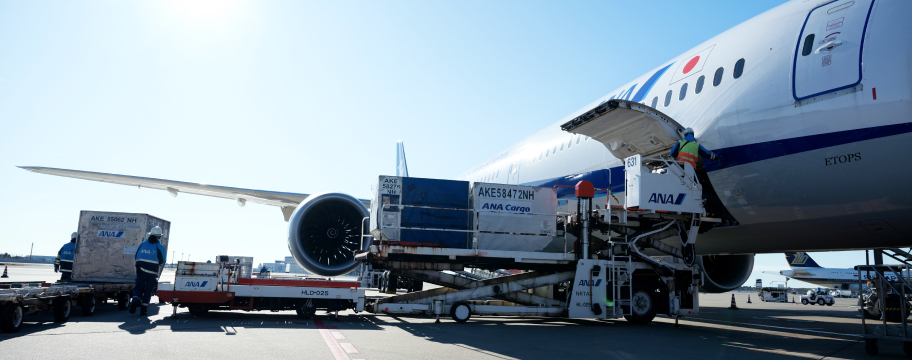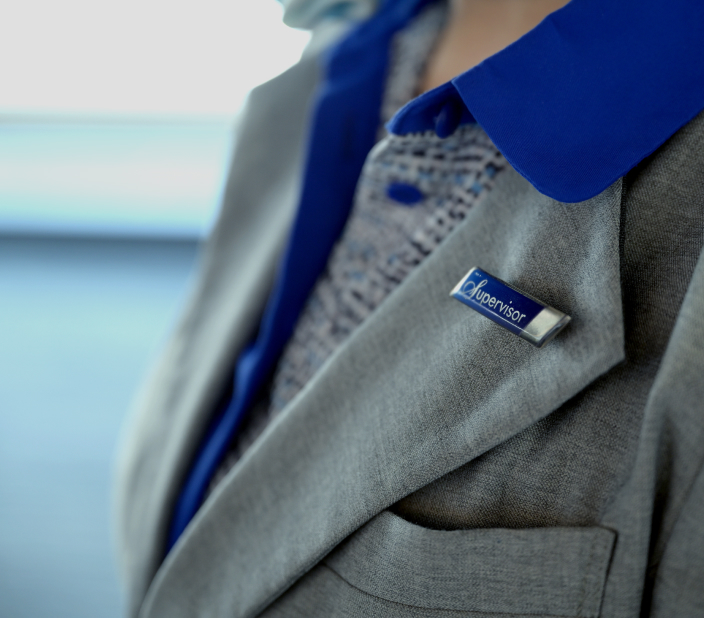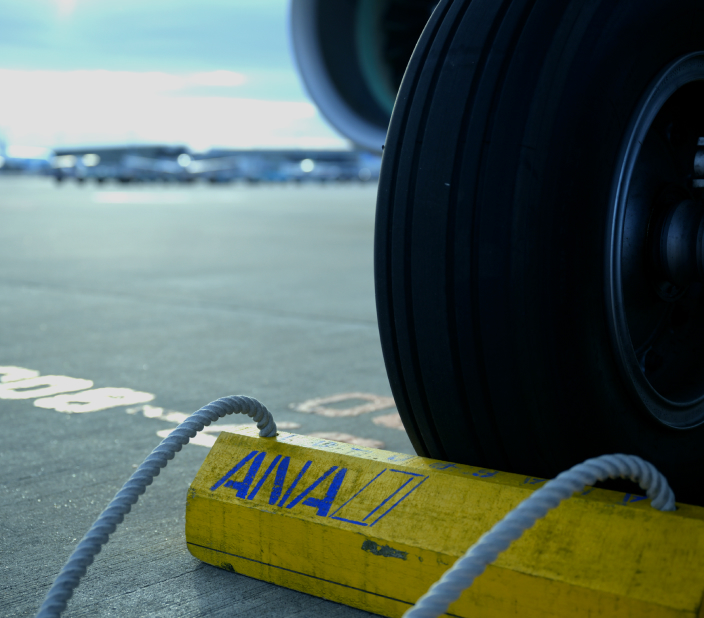Ground Handling
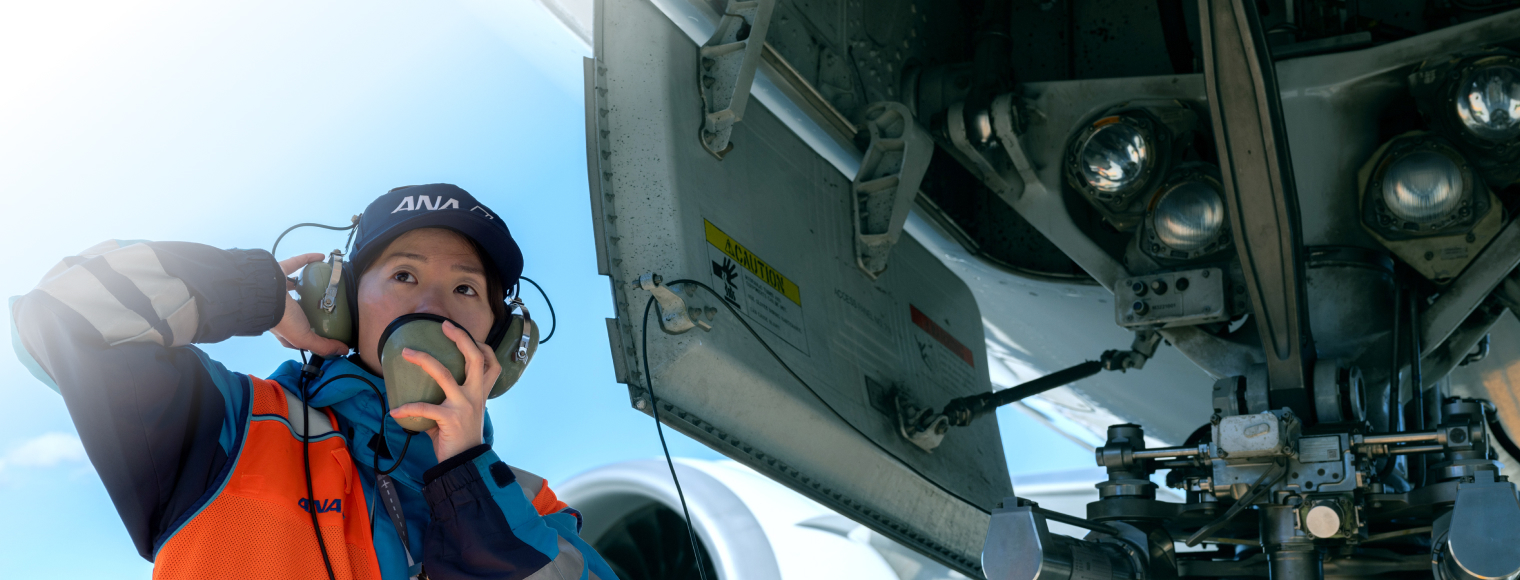
The unsung heroes
supporting safety in the air and on-time performance.
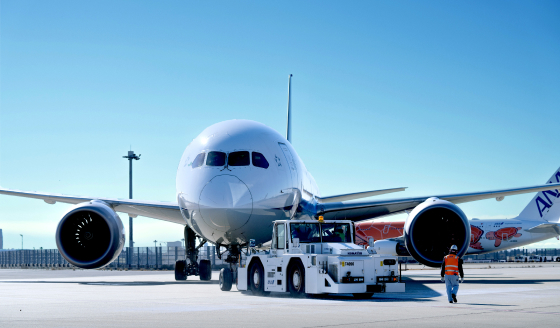
Towing/pushback
In the pushback, a towing tractor pushes an aircraft that is not able to back up under its own power to the taxiway, where it can then move on its own. The pushback is said to be one of the most difficult ground handling operations. Towing is when aircraft are moved from a parking position (“spot”) to another position in the apron. When towing an aircraft, the operator boards the cockpit and performs the necessary checks.
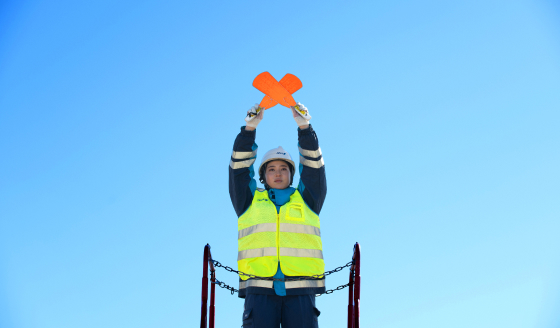
Marshalling
This job involves giving instructions to the pilots in an aircraft that has landed and safely guiding the aircraft to its designated position. The aircraft’s stopped position affects attachment of the passenger boarding bridge (PBB) and fueling operations, so precision and diligence are important qualities to have.
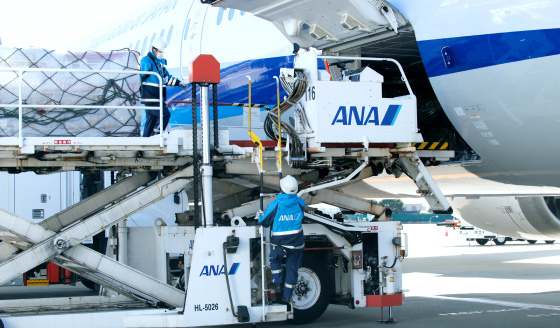
Loading and unloading
Aircraft are loaded with various types of cargo, mail and baggage. Cars and animals are sometimes loaded onto aircraft, too. Operators swiftly and carefully maneuver high lift loaders (HL) with advanced skill to realize on-time performance. Another part of our mission is to deliver baggage to customers reliably and as quickly as possible.
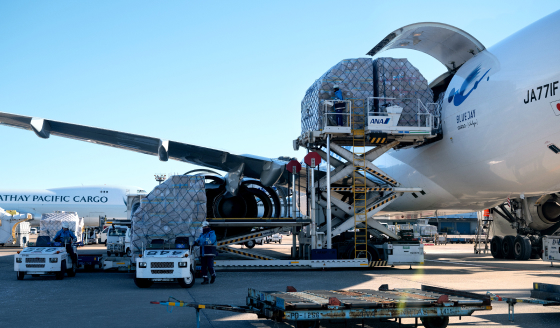
Cargo aircraft main deck
can be loaded on the aircraft instead. Main deck operations involve working with special cargo such as horses, helicopters and aircraft engines. These operations require advanced and precise handling skills and knowledge.
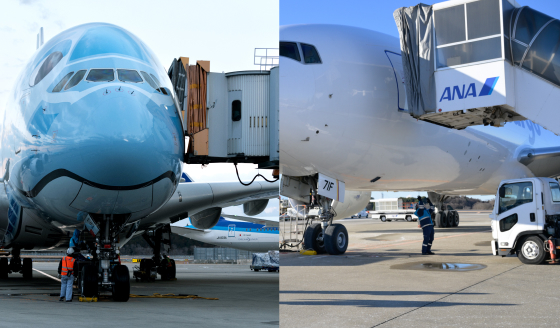
Attaching and detaching the PBB and passenger steps
The passenger boarding bridge (PBB) is attached and detached for boarding and deboarding aircraft. These operations must be performed accurately and safely to guide various customers safely to the cabin. The area called the open apron does not use PBB, so equipment called passenger steps is attached to the aircraft to provide access to the cabin.
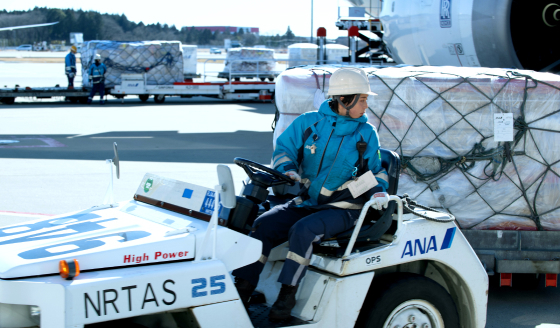
Baggage and cargo towing
Baggage and cargo get towed using a small tow tractor (TT). This towing operation is one of the basic ground handling operations at NRTAS. Connecting a TT to a high lift loader requires advanced driving skills.
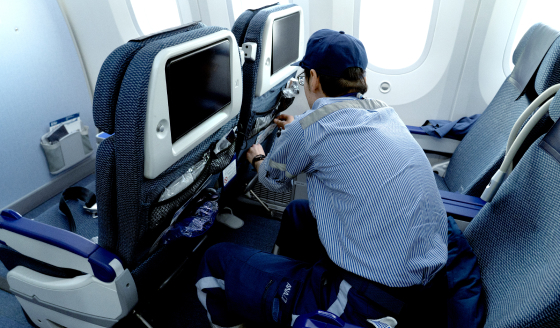
Cabin cleaning
ANA’s cabin cleaning services have earned a good reputation in Japan and around the world. Cabin cleaning involves more than just making the cabin look nice. Experienced staff provide the detailed level of care that Japan is known for, such as placing amenities in seat pockets. ANA has been named the World’s Cleanest Airline in the World Airline Awards organized by SKYTRAX, based on ratings of aircraft cabin cleanliness.
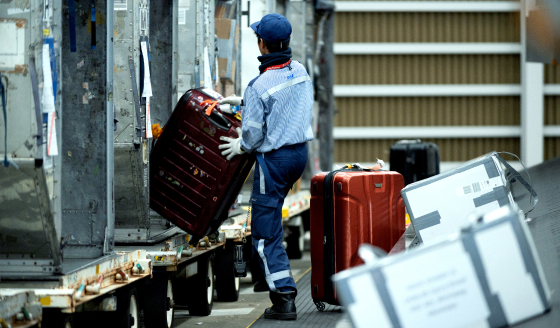
Baggage handling
For NRTAS, all checked baggage is also our “customer.” In addition to delivering baggage safely to its destination, we also handle baggage with care so that no damage is incurred. We strive to increase our efficiency so that arriving baggage can be picked up by passengers as soon as possible.
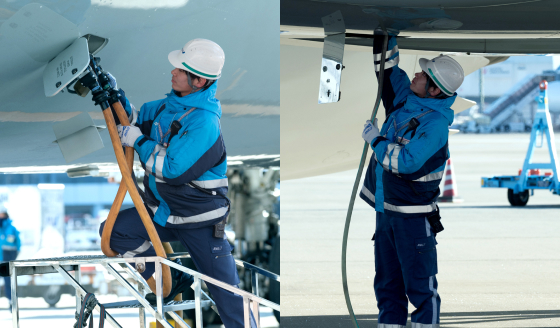
Aircraft services
Many aircraft from around the world are constantly flying into Narita. We provide power, water and wastewater services, modified for the type of aircraft.
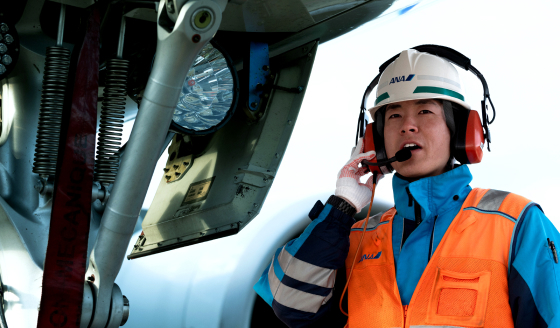
Headset operator
When departing, the cockpit and the ground operator (headset operator) communicate using an interphone system. The operator communicates with the pilots to mutually confirm engine start and convey the pushback direction. Conversations with pilots always take place in English, so the operator also needs language skills.
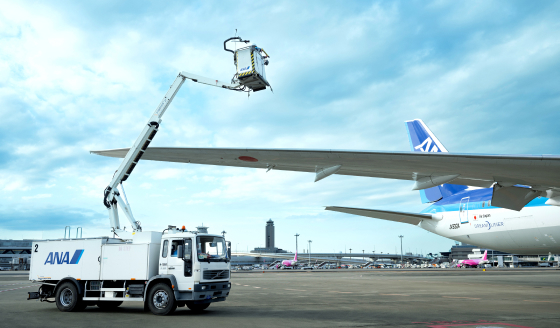
Snow and ice removal
A de-icing vehicle removes snow, ice and frost from the aircraft fuselage and wings. A special liquid is used in this work. Snow removal and de-icing are performed with dexterity and top priority on safety.
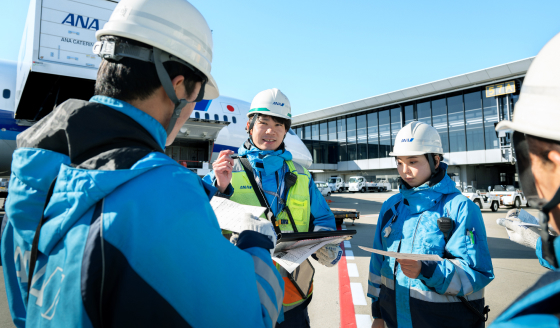
Load Master
The Load Master is the person responsible for airside safety operations, who performs safety and process management related to ground handling operations. To allow aircraft to depart safely and on time, the Load Master coordinates operations with each section using radio communications, shares the necessary information with other operators, and manages airside safety operations.
Workflow (arrivals)
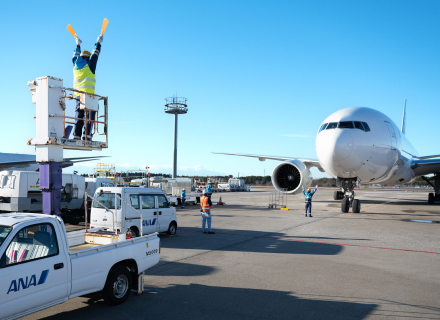
Marshalling
During arrival, marshalling (guiding) is performed so that the aircraft stops in the designated position. Marshalling involves fine-tuned maneuvers just using arm movements to signal instructions to the pilot on adjusting speed and turning left and right as well as to communicate the distance to the stopped position. Being right in front of giant aircraft coming toward you is a highlight of the job.
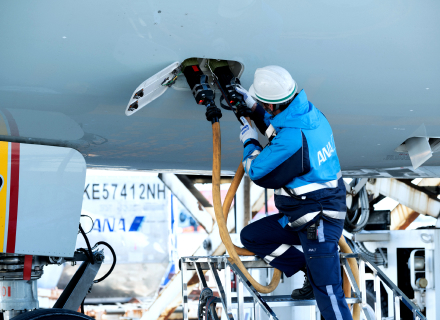
Power supply
Power cables extended from land are inserted in the aircraft to supply the necessary power. Once the power is flowing, equipment starts attaching to the aircraft and operations begin.
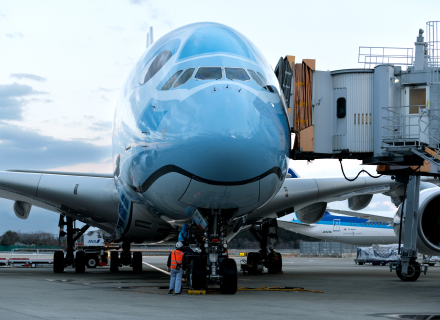
Attaching the PBB
After the aircraft is confirmed to be safely stopped, the passenger boarding bridge (PBB) that connects the aircraft and the terminal is attached.
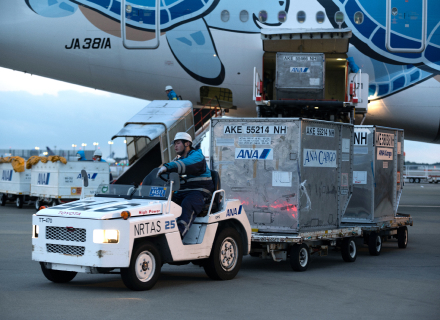
Unloading baggage and cargo
Unloading operations start immediately after the PBB is attached so customers are not kept waiting. Customers’ baggage and cargo is loaded onto containers and pallets (collectively called unit load devices (ULD) and unloaded from the aircraft. Aircraft unloading is performed safely and quickly while confirming the order of priority.
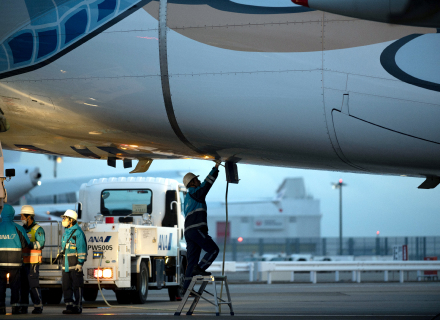
Water supply and wastewater removal
Water to be used in the cabin is supplied to the aircraft. Wastewater is also removed by a special-purpose vehicle to prepare the aircraft for the next departing flight.
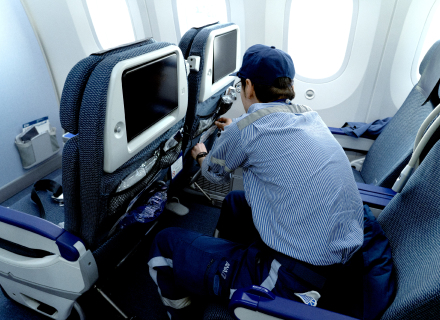
Cabin cleaning
Cleaning is performed during the short time between arrival and departure to maintain clean and comfortable conditions in the aircraft cabin.
Workflow (departures)
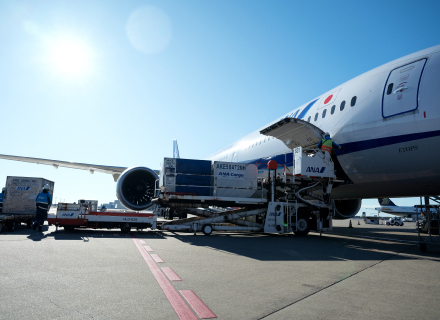
Baggage and cargo loading
Customers’ checked baggage and cargo are loaded into the aircraft’s cargo hold. They are loaded into pre-determined positions based on the loading plan created by load control staff for each flight and secured with restraints so that they do not move during flight.
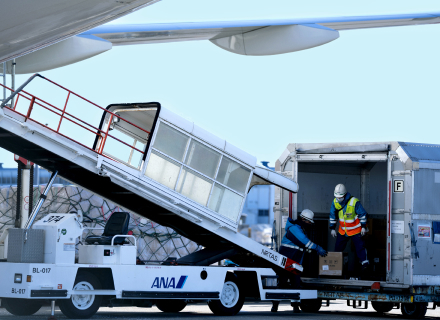
Loading the bulk cargo hold
Passenger aircraft have three cargo holds, one of which is the cargo hold for directly loading items onto the aircraft. Suitcases, strollers and other items are carefully loaded here one by one. Checked pets are also loaded in the bulk cargo hold. Temperature is strictly managed and the cages are secured so that they can withstand shaking during the flight.
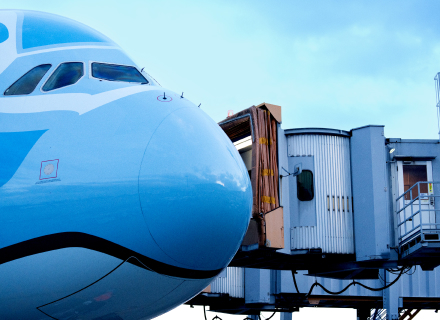
Detaching the PBB
Once all customers have boarded the aircraft, the aircraft’s door is closed and the PBB is detached.
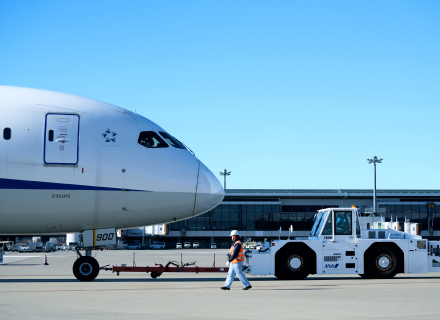
Pushback
The aircraft is pushed back to the taxiway using a large special-purpose vehicle (towing car). At Narita Airport, aircraft and buildings are very close to each other in parts of the apron, and the pushback is considered the star of ground handling operations as performing it requires advanced skill and extensive experience.
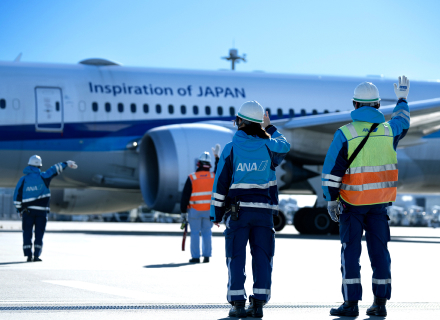
Send-off (goodbye wave)
The aircraft is given a send-off once it is moving under its own power. Customer faces are clearly visible from outside the aircraft, and customers receive a heartfelt send-off.
Acquired skills

Advanced handling skills
Narita Airport handles more cargo than any other airport in Japan. Being able to handle freighter flights (cargo aircraft) is a major attraction of Narita Airport, where the highest level of specialized handling knowledge is found in Japan. Because operations are performed here that are not performed at other airports, staff can obtain a wide range of experience in the field of ground handling operations. Staff also acquire advanced handling skills through handling the diverse variety of aircraft that fly here from other countries.

Communication skills
Narita Airport is one of the world’s leading international hub airports, and work here is conducted in cooperation with many airlines and departments both inside and outside Japan. High-quality communication skills are developed through this frequent cooperation, interaction and coordination.

Safety management skills
Ground handling requires understanding and applying various safety standards. Operational skills are developed while observing strict safety regulations, including knowledge about handling hazardous substances and safe cargo handling.




